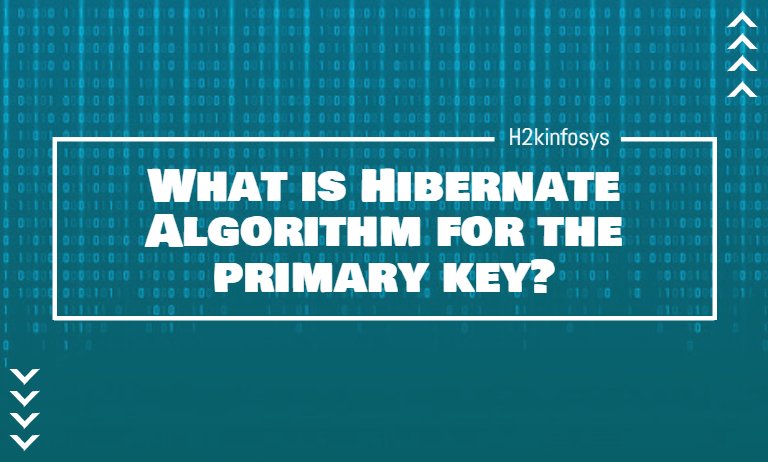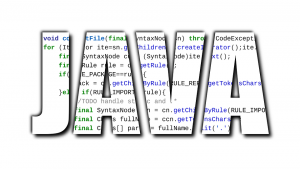Hibernate <Generator> classes are used to generate the primary key or an identifier. Multiple algorithms are used to generate the primary key. <generator> tag is a subtag of <id> tag. All the generator classes implement hibernate.id.IdentifierGenerator interface and it overrides the generate(SessionImplementor,Object) method. If you want to define your user-defined generator, you should implement the IdentiferGenerator interface and override the generate().
The basic syntax is :
<generator class=""> <param name=""> value </param> </generator> Example: <?xml version="1.0" encoding="UTF-8"?> <!DOCTYPE hibernate-mapping PUBLIC "-//Hibernate/Hibernate Mapping DTD 3.0//EN" "http://hibernate.sourceforge.net/hibernate-mapping-3.0.dtd"> <hibernate-mapping> <class name="hibernate.Student" table="student"> <id name="hid" column="HID" type="integer"> <generator class="increment"></generator> </id> <property name="sfirstname" column="SFIRSTNAME" type="string"></property> <property name="slastname" column="SLASTNAME" type="string"></property> <property name="srollnumber" column="SROLLNUMBER" type="integer"></property> </class> </hibernate-mapping>
Hiberanate provides multiple algorithms such as :
- Increment
- Assigned
- Sequence
- Hilo (High Low)
- Select
- Native
- Identity
- Uuid
- Seqhilo
- Guid
- Foreign
- Sequence-identity
1] assigned: It is the default algorithm. If no <generator> tag is defined then assigned generator class is used. In this algorithm the value assigned to the primary key field will be the primary key value in the database.
<id name="hid" column="HID" type="integer"> <generator class="assigned"></generator> </id>
2] increment: This algorithm works with all types of database software but the data type of primary key should be int, short, byte or long.
<id name="hid" column="HID" type="integer"> <generator class="increment"></generator> </id>
3] sequence: If the sequence is not explicitly defined the database uses default sequence (+1) and every client request is then increment by +1.
You can also create your own sequence by explicitly creating the sequence in the database as follows:
create sequence my-sequence increment by 20
You can also configure the sequence by using <param> tag which is a child tag of <generator> tag.
<id name="hid" column="HID" type="integer"> <generator class="sequence"> <param name="sequence" value="my-sequence"></param> </generator> </id>
Sequence algorithm can only be applied to int, short, long and byte data types.
Sequence algorithm is not supported by all the database softwares. For example:
Oracles supports sequence algorithm but MySQL does not supports sequence algorithm. If there is no sequence in the database then default sequence i.e. HIBERNATE_SEQUENCE is used.
4] hilo (high low): It uses high low algorithm and it uses database data column range.
<id name="hid" column="HID" type="integer"> <generator class="hilo"></generator> </id>
Default table is hibernate_unique_key and column is next_hi.
5] native: It uses identity, high low or sequence algorithms depending on the database vendor.
<id name="hid" column="HID" type="integer">
<generator class="native"></generator>
</id>6] identity: It is used in MySQL, MS SQL Server, Sybase, DB2 to support the id column. Database is responsible to generate the unique identifier.
<id name="hid" column="HID" type="integer"> <generator class="identity"></generator> </id>
7] seqhilo: It uses sequence and hilo algorithms. Its return data type is short, int , long.
<id name="hid" column="HID" type="integer"> <generator class="seqhilo"></generator> </id>
8] uuid: For the generation of id it uses 128-bit UUID algorithm. The UUID is represented as hexadecimal digits having length of 32 characters. It generates identifier using IP Address. It is also used to generate password.
<id name="hid" column="HID" type="integer"> <generator class="uuid"></generator> </id>
9] guid: It only works on MySQL and MS SQL Server.
10] select: It uses the primary key value returned through database trigger.
11] foreign: It is mostly used in one-to-one association and uses id of another associated object.
12] sequence-identity: It is only supported in Oracle 10g drivers and uses a special sequence generation strategy.


























